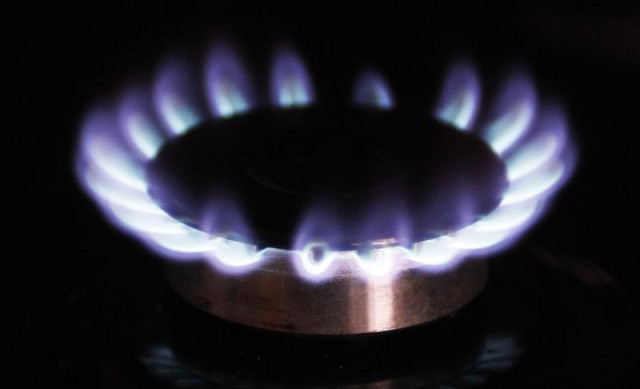
The plan comes ahead of a gas crisis that is likely to hit over 50% of domestic consumers in Punjab in the peak winter season.
If the government did not approve the subsidy, domestic and commercial consumers might not receive gas during off-peak hours in winter, said officials. The Pakistan Muslim League-Nawaz (PML-N) government had largely failed to focus on exploring domestic gas reserves and instead went for liquefied natural gas (LNG) imports.
The supply of domestically produced natural gas peaked at 2,830 million cubic feet per day (mmcfd) in 2010 when the Pakistan Peoples Party (PPP) was in power and supplies came down to 2,220 mmcfd in 2018 during the PML-N tenure.
Sui Southern Gas Company (SSGC) is now receiving 1,150 mmcfd of gas whereas SNGPL is getting 1,070 mmcfd. However, in 2010, SSGC was receiving 1,191 mmcfd while SNGPL got 1,665 mmcfd from domestic resources.
Punjab had suffered the most because of SNGPL’s inability to provide natural gas for industries, fertiliser plants and CNG stations for seven months in a year. Over 50% of domestic consumers could not be reliably provided natural gas for cooking and heating purposes from November to February every year.
Anticipating the repeat of the gas crisis in peak winter, the Petroleum Division has come up with different proposals to cope with shortages, which would be presented to the ECC for approval.
Officials told The Express Tribune that the Petroleum Division wanted the government to allow SNGPL to supply re-gasified LNG through its system to domestic and commercial consumers provided the Oil and Gas Regulatory Authority (Ogra) allowed the volume adjustment and financial impact on a cost neutral basis in line with the ECC decision taken on May 11, 2018.
The Petroleum Division was of the view that given the wide difference in the natural gas sale price for domestic consumption and the re-gasified LNG price, SNGPL may be provided direct subsidy based on actual re-gasified LNG consumption from December 2018 to February 2019. In the absence of the subsidy, SNGPL would manage the load of domestic and commercial consumers through varied pressure management tactics during off-peak hours.
The two public-sector utilities, SNGPL and SSGC, are engaged in transmission and distribution of natural gas in the country. These companies purchase allocated gas from gas producers and sell it to retail consumers.
With the passage of time, the gas supply to both the utilities had decreased due to the depletion of domestic reserves whereas new discoveries barely kept pace with the natural depletion of gas fields. There had been no increase in gas availability for the last many years.
The demand for gas increased over the last decade and the growing demand-supply gap necessitated gas load management across the country from time to time, resulting in varied levels of gas load-shedding.
SNGPL has reported that average gas consumption by domestic and commercial consumers in summer months was around 528 mmcfd, which increased to 867 mmcfd in winter 2017-18, creating a shortfall of 339 mmcfd. In order to manage the gap, the company opted for different options, which included pressure management during off-peak hours, diversion of 150 mmcfd from the general industry to domestic and commercial consumers and injection of 160-170 mmcfd of re-gasified LNG into the system for use by domestic consumers.
SNGPL expects that the total shortfall during winter 2018-19 is likely to remain at the same level of 339 mmcfd with slight variations.
The company is of the view that injection of re-gasified LNG for domestic and commercial consumers will be required and has estimated injection of 150 mmcfd at Rs35 per mmbtu, which is to be passed on to the domestic consumers.
Published in The Express Tribune, November 9th, 2018.
Like Business on Facebook, follow @TribuneBiz on Twitter to stay informed and join in the conversation.


















COMMENTS
Comments are moderated and generally will be posted if they are on-topic and not abusive.
For more information, please see our Comments FAQ